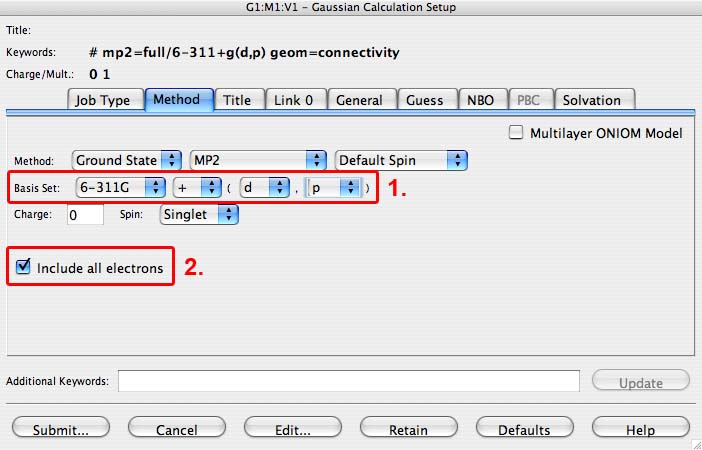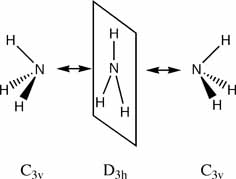Ammonia
Method
In this section we are going to look at the effect of using a better method and baisis set on the time it takes to do a calculation, and on the final geometry and energies obtained.We will be using a 6-311+G(d,p) basis set and the MP2 method. NH3 is a small molecule and the calculations do not take a lot of time, however when you start with a much larger molecule the calculations can take much longer!
When computing larger molecules you should always carry out a lower level calculation and then start the higher level calculations from the "pre-optimised" molecule, this is very important for saving time and processing (which costs money!).
We won't be doing that here however, because we want to see the time difference between the lower level and the higher level calculations so it is important that we start from the same structure each time.
- generate a NH3 molecule from scratch (as you did for the previous set of calculations) and optimise the molecule using a 6-311G+(d,p) basis set and the B3LYP method.
- On the Method tab, under basis set choose 6-311G, then in the next pull-down options choose the first option in each case (1.). Finally tick the "include all electrons" box (2.) You should end up with the options shown below:

- On the Method tab, under basis set choose 6-311G, then in the next pull-down options choose the first option in each case (1.). Finally tick the "include all electrons" box (2.) You should end up with the options shown below:
- now use the file nh3_mp2_d3h.txt and run this optimization. (Hint copy and save the contents to a file called nh3_mp2_d3h.com)
- we have actually optimised the ground state for NH3 under C3v symmetry and the planar inversion transition state which has D3h symmetry.

- Look over the three optimisation jobs and answer the following questions in your wiki:
- how long do these calculations take compared to your lower level ones?
- determine the barrier height to inversion by finding the relative energy at this level of calculation ΔE=E(D3h)-E(C3v) in kJ/mol
- has ΔE changed much between the B3LYP/6-31G and MP2/6-311+G(d,p) sets of calculations?
- how do your results compare to the experimentally determined barrier which is 24.3 kJ/mol?
